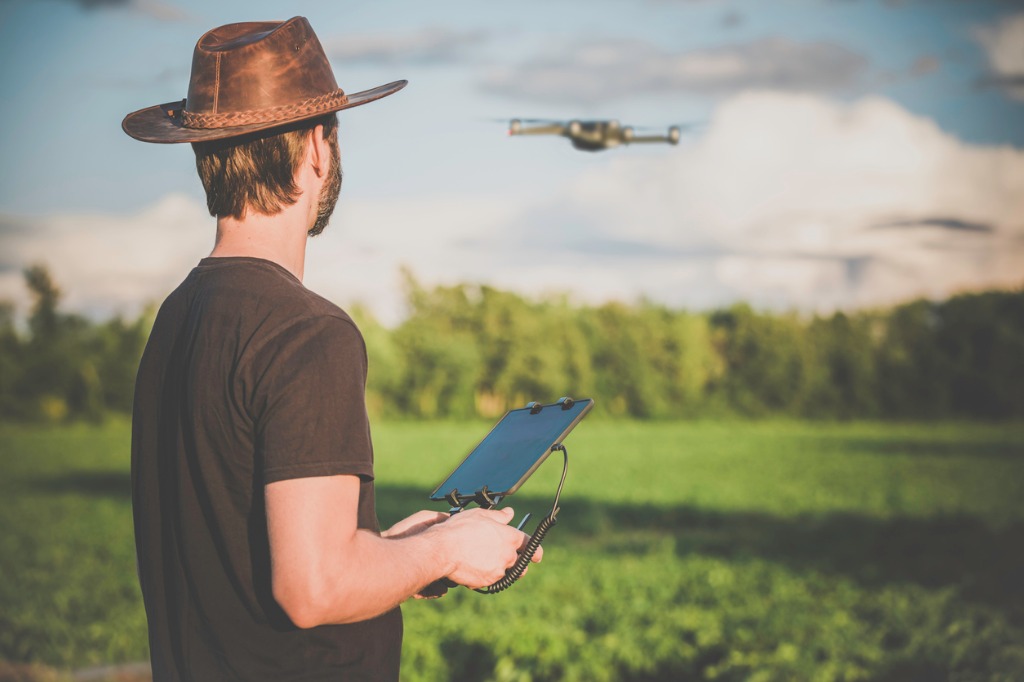Drones are one of the best new things to come to amatuer and pro photography in recent years. If you have been enjoying drone photography for a while or have just started to use your new drone, some drone safety tips may be helpful for you.
Before You Start

Your new drone is an amazing tool. Looking at two of the current drones from DJI, the DJI Mavic 2 Zoom and the DJI Mavic 2 Pro, you find several incredible capabilities and features.
The DJI Mavic 2 Zoom has a 12MP camera for video or still imaging with a 4X optical zoom lens, a top speed of over 45mph, a range of transmission and control from 5 miles away, and can fly for over 30 minutes on one charge.


If you picked up the new DJI Mavic 2 Pro, you will enjoy one of the best cameras on any drone, the 20MP Hasselblad L1D-20c gimbal camera, with a 1-inch CMOS sensor, Hasselblad’s Natural Color Solution technology, an aperture range of f/2.9 to f/11, and an ISO from 3200 to 12,800. The Mavic 2 Pro boasts similar range, speed, and flight times as the Mavic 2 Zoom.

With those features and capabilities, you want to be able to safely operate your new drone for a long time. First steps include proper training, licensing, and registration. After those basics are taken care of, the next step is to learn how to fly a drone safely.
Learn to Operate Your New Drone

photo by Onfokus via iStock
DJI has an excellent page of video tutorials and guides. In addition to the video guides, DJI has a forum for questions and feedback. Many of the better drone makers have similar support.
We also have a number of tutorials for beginner drone pilots. See the Learn More links below for some introductory tips for flying your drone safely.
Check the Battery

photo by Scharfsinn86 via iStock
Now you’re ready for your first actual flight. Proper drone safety includes all the preflight prep. You want to ensure the battery is fully charged. You will be testing out your new drone for a while, so having a full charge is important to get used to the drone.
Though 30 minutes is a great flight time for a drone. That ½ hour will fly by very quickly as you examine all the controls and functions.
Of course, when actually flying for a project, you also want a full battery charge to maximize how much video or how many images you can gather. You’ll also want to have a spare battery or two on hand that are fully charged, that way you can extend the time you can actually have the drone in the air.
Check all the Pieces

Drone safety can be thought of in two ways. Protecting yourself and others from harm and protecting your drone. Protecting yourself from harm mostly involves not letting the swiftly moving propellers impact you. They really do spin quite fast.
Most drones have removable propellers. They are removed either for storage or for replacement. Drone safety suggests you should double check that the propellers are properly attached. Besides injury to you, if the propellers come off in flight, you could lose or break your drone.
Set the Return Home Feature

Photo by Peter Fazekas from Pexels
At the start of each drone flying session, check that the return home function is properly set and that the built-in compass and GPS are calibrated.
Then give it a flick of the switch or toggle the button, and see if it does what the tutorial says it should. If not, you’ll need to consult the owner’s manual for your specific drone.
Practice in an Open Area

Photo by Stephan Müller from Pexels
For your first outdoor test flight, or for testing out new techniques or features any time thereafter, it’s good practice to choose an open area without obstructions that could get in the way. An open field is preferable to an apartment courtyard, for example.
The more obstructions there are, the more likely you could fly your new drone into them as you test out its features and your skills. Plus, it gives you the opportunity to observe exactly how you’re affecting the drone with the controller.
Post Flight Drone Safety Tips

photo by golubovy via iStock
Drone safety doesn’t end when the flight ends. Some things need to be taken care of properly afterwards, too.
It may sound too obvious to be a real drone safety tip, but you want to definitely turn off your drone after flying. In fact, best drone safety practice is to turn it off before you shut off the remote controller. If you turn off the remote before switching off the drone, there is a chance of accidental uncontrolled flight.
Right after the flight, the rechargeable battery is going to be very hot. Instead of charging the battery after flight, you might want to develop the habit of waiting for recharging until you need to use the drone again. If nothing else, allow sufficient time for the batteries to cool before charging.
Store Your Drone Properly

photo by gorodenkoff via iStock
Our final drone safety tip concerns storage. Some people keep the box it came in for as long as it lasts, using it for storage and transport. A better solution is a dedicated bag or case optimized for carrying a drone. I like to keep mine in a protective bag designed for photographic equipment.
By observing these drone safety tips, you help ensure that your new drone will perform optimally each time you take it out for flight and imaging.
This blog post about "Drone Safety" was first published on our website here https://www.photographytalk.com/drone-safety-what-you-need-to-know